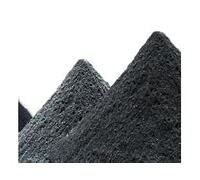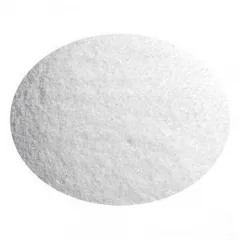1. Introduction
When you hear ‘titanium powder,’ you might picture sparklers or sunscreen—but in cutting-edge industries, it’s the backbone of next-generation manufacturing. Far from cosmetic or pyrotechnic uses, high-purity titanium powder is revolutionizing sectors like aerospace, biomedical engineering, and defense through additive manufacturing (3D printing).

Unlike everyday powders, titanium metal powder—especially in spherical, gas-atomized form—is engineered for precision, strength, and biocompatibility. Let’s dive into how this niche material is shaping the future of high-tech production.
2. Titanium Powder in Additive Manufacturing
Additive manufacturing has turned titanium powder from a lab curiosity into a mission-critical material. The most common grade? Ti6Al4V powder (also called Ti64 powder), a titanium alloy powder prized for its strength-to-weight ratio and corrosion resistance.
For 3D printing, the powder must be spherical and flow smoothly—hence the demand for gas atomized titanium powder over irregular HDH (hydride-dehydride) variants. Spherical titanium powder ensures consistent layer deposition in laser powder bed fusion (LPBF) systems, which is essential for printing complex aerospace components or patient-specific medical implants.
3. Key Grades and Specialized Powders
Not all titanium powders are created equal. Here’s a quick breakdown of the most relevant types in advanced applications:
- Pure titanium powder: Used in biomedical implants where biocompatibility is non-negotiable.
- Ti6Al4V powder: The workhorse of aerospace and medical 3D printing.
- Titanium nitride powder and titanium carbide powder: Used as hard coatings or additives in cutting tools, not typically for printing.
- TiB2 powder (titanium diboride powder) and titanium boride powder: Ultra-hard ceramics used in armor and wear-resistant composites.
- TiH2 powder: Sometimes used as a foaming agent or precursor in powder metallurgy.

Note: Tio2 powder (titanium dioxide) and tio2 nano powder are chemically different—they’re oxides used in pigments, sunscreens, or photocatalysts, not structural 3D printing.
4. Pricing and Sourcing Considerations
The titanium powder price per kg varies widely based on purity, particle size, morphology, and alloy type. As of 2024, expect to pay:
- $150–$300/kg for standard-grade pure titanium powder
- $300–$600/kg for high-quality spherical Ti6Al4V powder for 3D printing
Factors driving cost include production method (gas atomization is pricier than HDH), certification (AMS or ASTM standards), and batch consistency. The titanium powder for 3D printing price reflects these quality demands.
When you buy titanium powder, always verify your supplier’s credentials. Reputable titanium powder suppliers provide full traceability, particle size distribution reports, and oxygen content data—critical for aerospace or medical use.
5. How Titanium Compares to Molybdenum and Tungsten Powders

While titanium dominates lightweight, high-strength applications, other refractory metal powders serve different niches:
- Molybdenum powder (moly powder) and molybdenum disulfide powder (MoS2 powder) excel in high-temp lubrication and furnace components. Molybdenum metal powder is denser and more heat-resistant but heavier than titanium.
- Tungsten powder and tungsten carbide powder offer extreme density and wear resistance—ideal for radiation shielding, cutting tools, and military penetrators. Tungsten powder price per kg often exceeds titanium’s, especially for spherical or nano grades.
In short: titanium wins for lightweight strength; molybdenum for mid-range heat stability; tungsten for density and hardness. Each has its place in advanced manufacturing.
6. Safety, Handling, and Misconceptions
Titanium dust can be flammable—especially fine nanopowder—so proper handling in inert atmospheres is essential. Contrary to myths, titanium powder isn’t water-reactive like sodium, but it can ignite if exposed to sparks or high heat in air.
Also, don’t confuse titanium flash powder (a pyrotechnic mix) with industrial titanium metal powder. The former is unsafe for manufacturing; the latter is rigorously controlled for engineering use.
And no—burnt titanium powder coat isn’t a thing. Titanium isn’t typically powder-coated; it’s often anodized or used bare due to its natural oxide layer.
7. Where to Buy and Final Tips
If you’re looking for titanium powder for sale, prioritize certified suppliers offering gas atomized or plasma-rotated spherical grades. Check specs for:
- Particle size (typically 15–45 µm for LPBF)
- Oxygen content (<0.15% for critical apps)
- Flowability and tap density
International titanium powder markets are growing, with major players in the U.S., Germany, and Japan. Always compare titanium metal powder price against quality—not just upfront cost.
8. Conclusion
Titanium powder isn’t just another industrial material—it’s a gateway to lighter aircraft, longer-lasting implants, and smarter manufacturing. Whether you’re sourcing Ti64 powder for aerospace prototyping or evaluating titanium nanopowder for research, understanding grades, pricing, and safety is key. As additive manufacturing evolves, so too will the demand for high-performance titanium powder—making it one of the most strategic materials in modern engineering.
Our Website founded on October 17, 2012, is a high-tech enterprise committed to the research and development, production, processing, sales and technical services of ceramic relative materials such as What. Our products includes but not limited to Boron Carbide Ceramic Products, Boron Nitride Ceramic Products, Silicon Carbide Ceramic Products, Silicon Nitride Ceramic Products, Zirconium Dioxide Ceramic Products, etc. If you are interested, please feel free to contact us.
